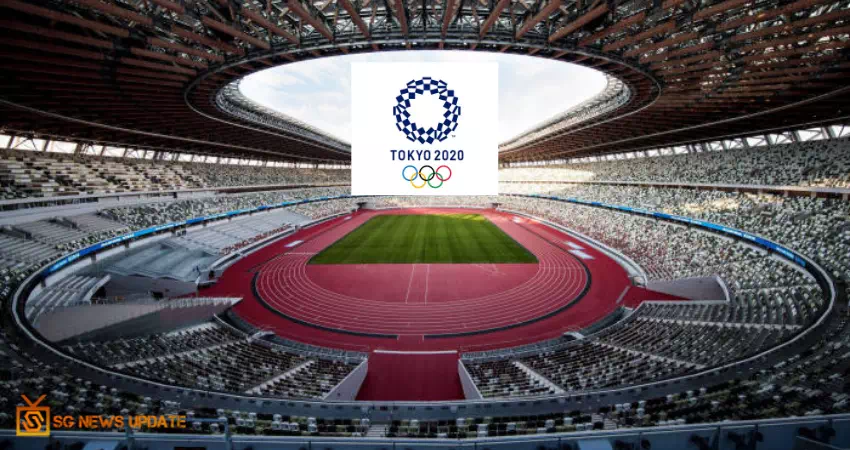
The lighten 2020 Summer Olympic Games opening ceremony featuring Japan's greatness, rich culture, and inheritance while mirroring the disconsolate environment of a world attacked by an unstoppable pandemic finished up at National Stadium in Tokyo on Friday without the standard razzmatazz.
The Tokyo 2020 Games were initiated by Japanese Emperor Naruhito, who turned into the third individual from his family to do as such, a month in the wake of raising stresses over the possible spread of Covid-19 during the Olympics.
Local people walking around the dazzling National Stadium were denied admittance attributable to the crowd control preclusion, regardless of the way that visitors from one side of the planet to the other, including competitors and authorities, came to the opening function. Fewer athletes from all contingents went to the function, some to concentrate on their Saturday contests, and others because of a paranoid fear of getting the ailment that has effectively spread across the Games town.
The International Olympic Committee (IOC) president, Thomas Bach, conceded that the Tokyo Games will be unique in relation to past ones. Without his iron determination and stubbornness, the Tokyo Games would not have come around. Protestors accumulated outside the arena during the opening function and made their voices heard, making the police intercede. Despite the fact that there were no observers, there were firecrackers and music, from renowned Japanese video games, to which every one of the contending countries strolled in, drove by Greece, home of the Ancient Olympic Games, with host country Japan entering the arena last.
An aggregate of 19 Indian competitors, including banner conveyors famous fighter M C Mary Kom and men's hockey group captain Manpreet Singh, other than six officials, taken part in the function. The nation has a 228-in number delegation in Tokyo, including more than 120 competitors.
The show started with a video of mathematical shapes drawn on a blackboard in chalk. A hand-drawn movement set them into animation, and the shapes bit by bit transformed into the National Stadium. With the Games being held in the wake of a phenomenal health emergency that challenged the world, the strength of the competitors is depicted in a video that tallies down the last minutes until the beginning of the ceremony. The last second of the inauguration was a higher perspective of the National Stadium, which looked like a zero when seen from a higher place.
At the point when the countdown hit zero, a light show started that went on for around 20 seconds, the shades of which were indigo and white - the shades of the Tokyo 2020 emblem - and molded like a fan, which is a propitious image in Japanese culture. The two major screens inside the arena illustrated the COVID-19 countermeasures which have been carried out to guarantee the Games goes on with no hiccups.
There was a ton of spotlight on unity in diversity, harmony and fortitude during the ceremony, with the message 'you might be separated, yet not alone', to the competitors who have for since quite a while ago prepared in quarantine on account of the dread of getting the COVID infection.
In the subsequent portion, the protagonist was a solitary female athlete, preparing in the haziness, running quietly on a treadmill, honoring the numerous singular competitors preparing from one side of the planet to the other. The Japanese ruler Naruhito and Bach were then presented. The Japanese flag was carried out by eight youngsters, four famous athletes of the country, an individual with an impairment and medical care experts in acknowledgment of their steady help during the pandemic.
The topic of the function was unitedly pushing ahead regardless of the difficulties tossed at the world. With a snapshot of quietness, the function then, at that point recollected every one individuals who lost their lives during the pandemic, individuals from the Israeli delegation killed during the 1972 Munich Games extermination, the 2011 earthquake, Tsunami and the atomic fiasco.
Associates from the Japanese self defence forces upraised the national flag on the Protocol Stage as the public song of praise 'Kimi Ga Yo' played behind the scenes. The country's well known artist Misia sang the national anthem. The occasion was a long ways from the charismatic functions of London 2012 and Rio 2016 including a large number of entertainers in stuffed arenas, however it remained on top of the remarkable time.
Archery’s ranking rounds results
World No.1 Deepika Kumari was conflicting yet the male archer’s exhibition was essentially disappointing in the Olympics' positioning rounds, inciting a rejig of India's blended pair mix on an disorganized day at the Yumenoshima Park here on Friday The Koreans, who avoided all International contests in the development to the Olympics since 2019, ruled, remembering a main three completion for the ladies' segment where youthful sensation A San broke a 25-year-old Olympic record.
The Indian men's team of Atanu Das, Pravin Jadhav and Tarundeep Rai, in any case, didn't post especially great scores and pretty much figured out just to sneak into top 10 in the group rankings. Deepika slipped from fourth at the midway mark to complete 10th with 663 scores which was way beneath her best International positioning score of 686. "I feel my exhibition was great just as bad...it was in the middle of I would say," Deepika said.
Coming Soon...!
Comments (0)